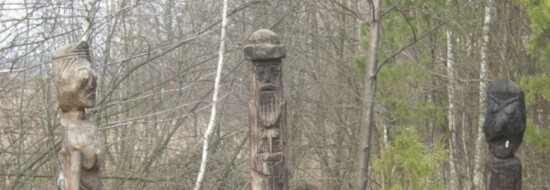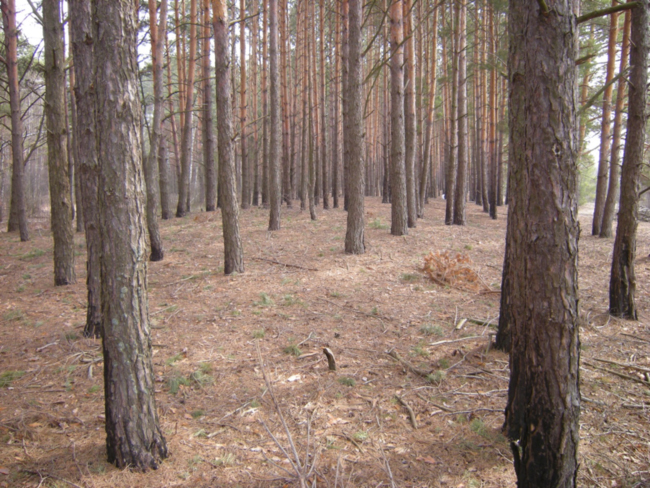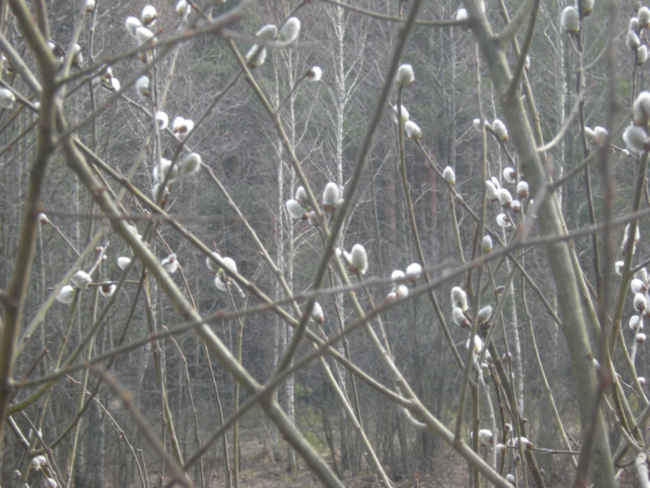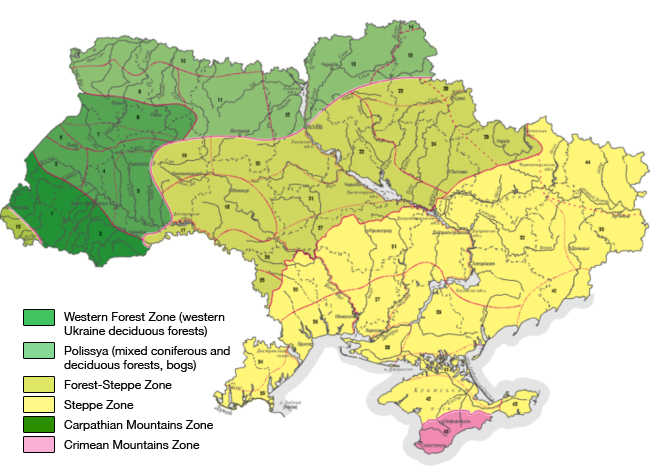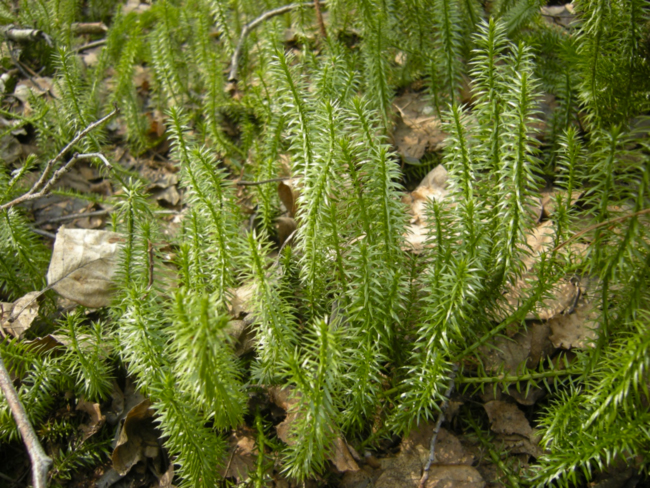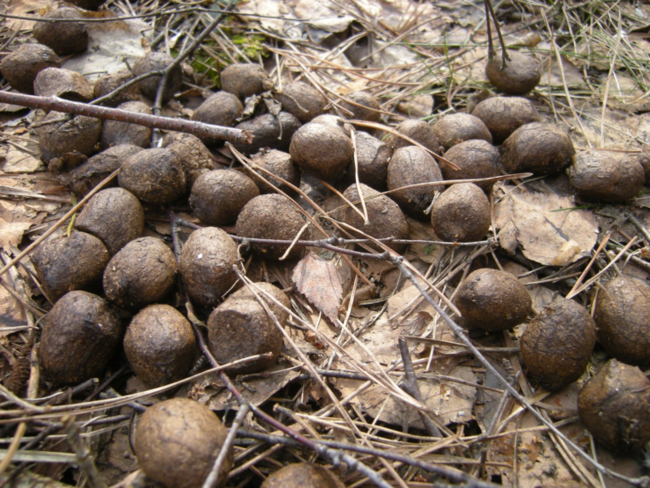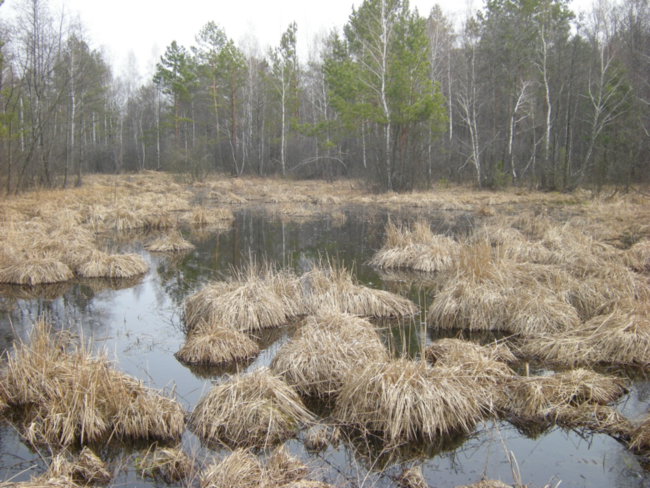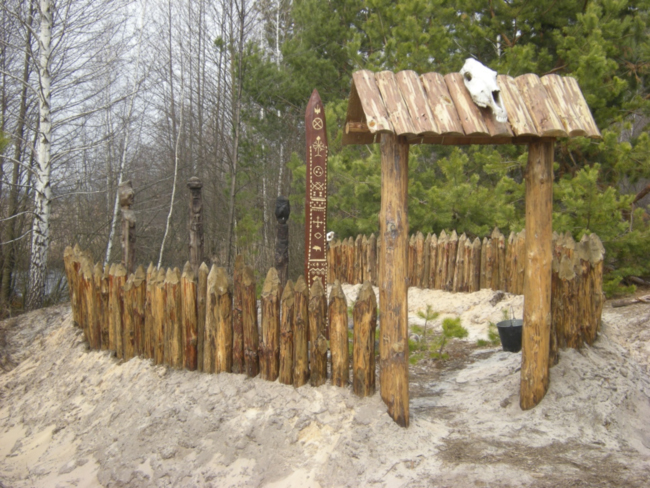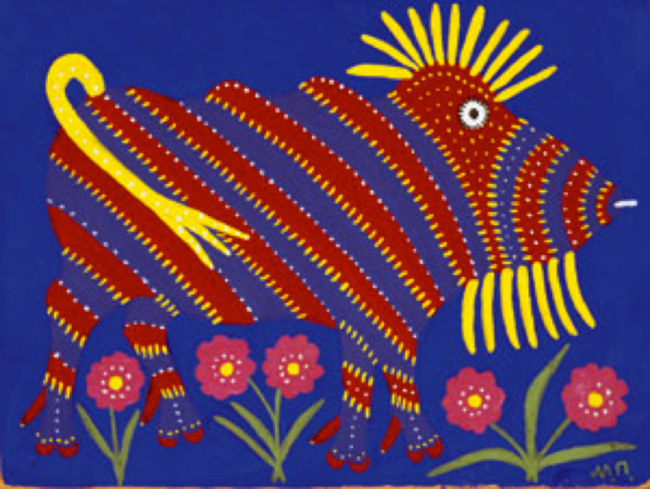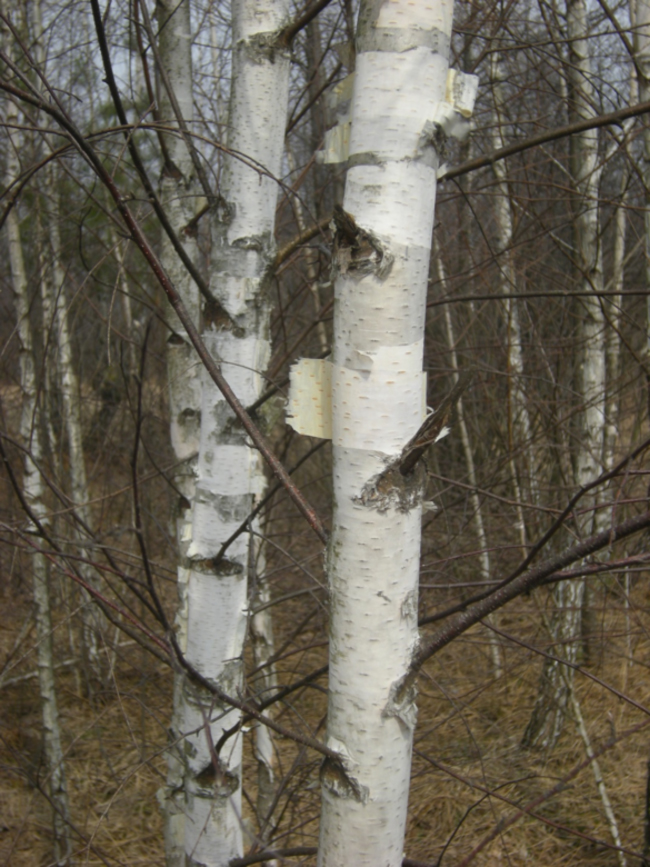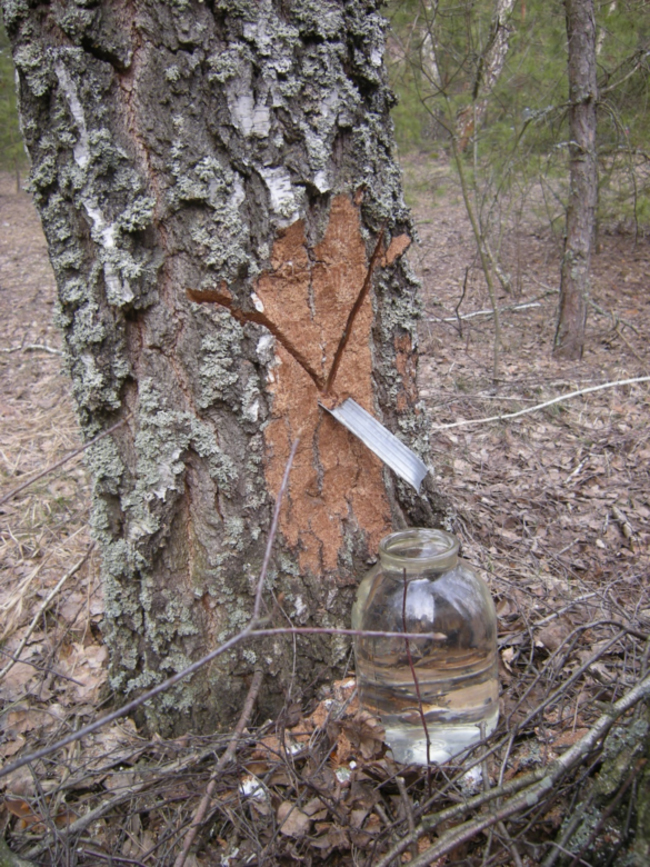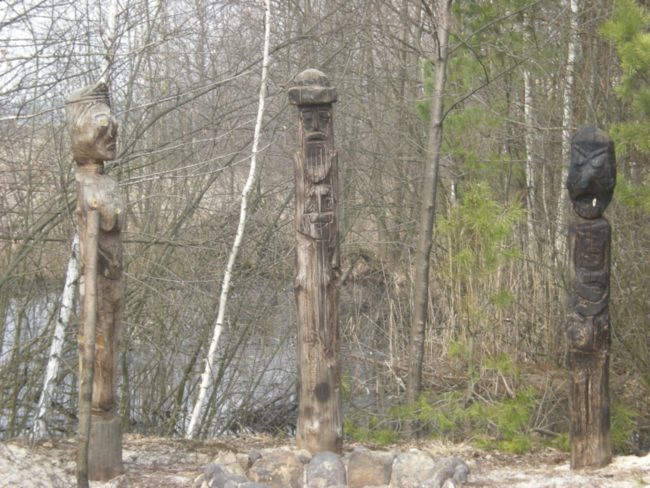March 2011: In my last episode, recounting a trip to the Russian-speaking steppe region of eastern Ukraine in March, 2011, I described the larks singing, the crocus blooming, the blue sky and sunshine on the golden steppe as it was emerging from winter into spring. After we returned to Kiev from that trip, our USAID biodiversity assessment team met with a wide range of Ukrainians to discuss the challenges of, and opportunities for, conserving the country’s rich biological diversity. We met people from government agencies, universities, non-governmental organizations (NGOs), and international donor agencies.
One meeting was with a senior staff member from the Department of Biodiversity and Land Protection of the Ministry of Ecology and Natural Resources of Ukraine, a Ph.D. biologist, who was in charge of compliance with all of the international conventions dealing with biodiversity to which Ukraine is a party. He proposed that we meet for lunch at a café near the Ministry rather than in his office so he could feel free to be candid with us, and not have to answer questions from the head of his department later about why he was talking to a consulting team working with USAID – in 2011 official relations between the U.S. and Ukraine were a bit chilly. He gave us a long list of what he felt were the main actions needed to conserve nature in Ukraine, emphasizing especially the need for public awareness of the status and value of biodiversity, public access to environmental information held by the government, and greater public participation in environmental decision-making. A better understanding of the effects of climate change on biodiversity, of the threat of non-native invasive species, and of the value of ecosystem services were also on his list of actions needed.
Another memorable meeting was with the Chair of Forest Management of the Institute of Forestry at the National Agrarian University of Ukraine, a Ph.D. forest scientist, in his office in an old building on a huge campus swarming with students. It reminded me of my days at the University of Colorado. The professor was in a suit and tie, spoke good English, and was extremely knowledgeable about the forest situation in Ukraine. He was a bit stiff and formal at first, but warmed up and relaxed, and eventually painted a clear picture of how they are starting to bridge the gap between the views of the old-school, Soviet-trained foresters and a more modern vision of multiple-use forestry.
It’s an exciting time for forest management and conservation, in Ukraine, I thought, full of potential and pitfalls. Ukraine could turn toward a modern model of forest management as part of its transition from its Soviet past, the professor said – toward participatory, demand-driven, mainstreamed, multiple-use conservation of the country’s forests – or it could continue with the old status quo.
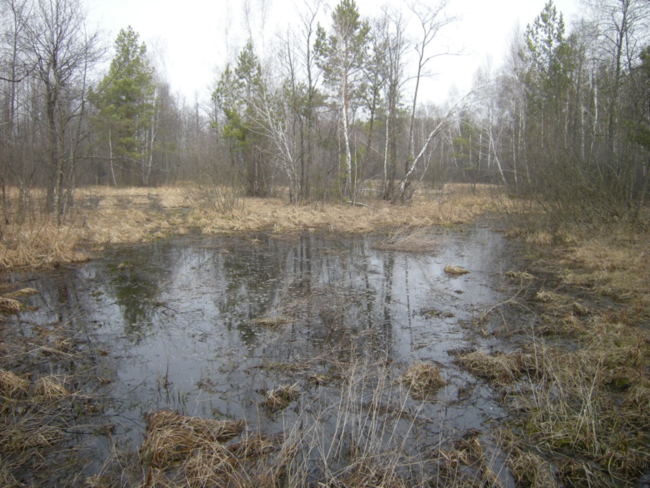
Typical landscape of the Polissya region, with bogs, pine and birch forest, Mizhrichenskyy Regional Landscape Park
After many days of meetings, we made a break from the city for a site visit to another of Ukraine’s ecosystems. We travelled north to the forests and bogs of Polissya, a stark contrast to the open-sky, dry steppe of the east. There it was pussywillow spring, cranes arriving in the wetlands after winter, the time when local people tap the birch trees for their spring-flowing sap to ferment into birch beer. To reach it we only had to drive about two hours north from Kiev up the Dnipro River, to the edge of the Chernobyl Exclusion Zone.
Polissya sweeps in a belt across northern Ukraine, bordering Russia on the east, Belarus in the middle, and Poland on the west. This ecoregion is part of the continental ecological transition zone between steppe grasslands and the northern boreal forests of Eurasia that slices through Ukraine. Nearly one-quarter of Polissya is covered with mixed forests of pine, birch, oak, and alder. Pinus sylvestris, sometimes called Scots pine although it ranges across Eurasia from Scotland to Mongolia, is the most common forest species, but birch is also common. Bogs cover six percent of Polissya now, but that is only about half of their original area – many bogs were drained for agriculture. The area embraces one of the largest wetlands in Europe, making it an important link in the migration routes of water-dependent birds across the continent.
It was the first Saturday in April, and we drove north to the Mizhrichenskyy Regional Landscape Park, passing through a few small villages. In one we stopped to see a small sawmill, sawing locally-grown pine for local use. We spent the morning with the director of the park, Andriy Sahaydak. Sitting in the sun at the edge of a huge marsh, a crane flew over against the white sky – a big white bird with square black wingtips, primaries flared like fingers, long trailing legs, and a long neck. This was the archetypal crane according to Linnaean scientific nomenclature, Grus grus – “Crane crane.”
The big wetlands bordering the Dnipro River here are a stopover for migrating cranes. There are wolves in Mizhrichenskyy, pushing down from their core zone in Chernobyl, exploring for new territory. And lynx in good numbers, according to Alena, a member of our assessment team. And moose – I found their droppings by the boggy ponds. And European beaver too, and a bunch of other species from the Ukraine Red Book of threatened and endangered species, just as on the steppe in the east, but in this case forest- and wetland-dependent species. Andriy said that the draining of wetlands along the Dnipro upstream from the park is a threat to the park ecosystem and its species, and they are trying to restore bogs and wetlands in the park wherever they can. I saw sundews, those amazing insectivorous wetland plants – several species occur here, some in the Ukraine Red Book. And there was the stiff clubmoss, Lycopodium annotinum, also in the Red Book.
The Polissya ecosystem retains the imprint of the last Ice Age. It was here that the front edge of the great continental ice sheet that covered northern Eurasia sat about 10,000 years ago, and melted as the climate changed. Wandering along the edges of boggy ponds and through the forest of pine and birch in Mizhrichenskyy, I could see the legacy of the ice – just like it can be seen in the Boundary Waters of northern Minnesota. A place like this provides an extraordinary opportunity to expand our time horizons, and to connect with deeper ecological time, with a history of environmental change over millennia.
As part of a work project, the Kiev-based NGO “EcoClub Green Wave,” whose members are mainly university students, had built a model of a pre-Christian shrine to forest gods and goddesses on a small island in Mizhrichenskyy. It was a replica of earlier pagan shrines from the area: powerful wooden figures of a bearded man, a woman, and a black ogre with a white snaggle-tooth. Here culture echoed back into deeper time as well.
Since the Chernobyl nuclear reactor meltdown in 1986, an area within a 30 kilometer radius – about 2,800 square kilometers – has been off limits to public access except for monitoring and scientific research because of the high levels of radioactive contamination that still persist. With no people there, the Chernobyl Exclusion Zone has become a strange kind of nuclear nature sanctuary, where species that are threatened by human activities can reproduce and rebound. It is a “no man’s land,” where native Eurasian biodiversity is still able to contest the ancient landscape. Populations of typical animals like wolves, wild boar, roe deer, red deer, moose, and beaver have multiplied enormously and begun expanding outside the zone. The area has herds of European wisent (Bison bonasus). By early 2005, a herd of twenty-one rare Przewalski’s horses that escaped from captivity in the quarantined area six years earlier had bred successfully and tripled in number. Lynx have apparently made a comeback, and there are reports of tracks of brown bears, an animal not seen in the area for several centuries. A 2006 report by the Chernobyl Forum – an international panel of 100 experts assembled by the UN, the World Health Organization, and the International Atomic Energy Agency – lent scientific weight to the view that by stopping hunting, agriculture, and other human activities in the zone the Chernobyl disaster allowed wildlife to flourish. “The Exclusion Zone,” the authors concluded, “has paradoxically become a unique sanctuary for biodiversity.” A 2005 book, The Wormwood Forest: A Natural History of Chernobyl, made this same case.
A painting by a famous Ukrainian folk artist, Mariya Pryimachenko, made in the year of the Chernobyl meltdown, depicts a multicolored beast, a “zeber from the marshes of Polissya” — perhaps a new mutant species to add to Ukraine’s biodiversity? Or perhaps a joke from the artist.
Ukraine has a rich history of nature protection, and the national system of protected areas is currently composed of more than 7,000 protected areas covering around 2.8 million hectares, somewhat more than 5% of the national territory. Its foundation, dating from the Soviet era, was the creation of strict protected areas for scientific use, called zapovedniks. The word zapovednik comes from a Russian root word meaning “sacred, prohibited from disturbance.” The closest English translation would be “nature preserve” or “nature sanctuary.” These are strictly protected areas that are not open to the public, but generally open only to scientists. Although these strict nature preserves seem to foster a small and often very dedicated constituency of scientific researchers, they do not lend themselves to developing a broader public constituency for biodiversity conservation.
The word “conservation” does not have an equivalent in Ukrainian, suggesting perhaps that the very concept of what we think of as conservation is not common. There has been, apparently, no equivalent in Ukraine of John Muir, one of the founders of nature conservation in the U.S., who extolled the aesthetic, spiritual, and recreational virtues of wild nature. Nor do there seem to be, in Ukraine, NGOs that are equivalent to the Sierra Club or Wilderness Society in the U.S., which can take that theme to civil society and create a constituency for conservation.
In the end, one of the conclusions of our assessment was that although most of the “actions needed” for conserving biodiversity are the ultimate responsibility of the Government of Ukraine, few of them can be realized unless there is a political constituency for them. Such a constituency is needed to create the public demand for these actions, and thus to create the political will on the part of lawmakers and government officials to carry them out. Increased capacity of NGOs to raise awareness and advocate for conservation is needed.
To build such a public constituency, we saw great promise in the Regional Landscape Parks, managed at the oblast level with input from local councils, and zakazniks, administered through regional offices of the Ministry of Ecology and managed by local councils and land users. In that context, the work of young NGO volunteers that we observed in Mizhrichenskyy Regional Landscape Park, where they were building some basic infrastructure for nature education and tourism, was a very positive, hopeful example.
What seemed clear from all of our discussions was that there is a strong link between improved public participation, democracy, and governance and improved biodiversity conservation. A political “spring” is needed in order to conserve the threatened and endangered species and ecosystems of Ukraine, and maintain the value of the products, services, and non-material benefits they provide to the people.
In the few weeks since writing my last story, the political situation in Ukraine has taken a dark turn. Russian troops have occupied the Crimean Peninsula, and tension and fears have risen, and annexation of the Crimea to Russia appears more and more likely. Ice ages, Kievan Rus, Mongols, Nazis, Soviets, and other seasons of dark and light have washed back and forth over this land like tides over the millennia. And the cranes have passed through on their migrations, the moose and wolves have wandered the landscape, and pussywillows graced the early spring.
See more pictures:
Related links:
- The Wormood Forest. M. Mycio. 2005.
- Mariya Pryimachenko: Ukrainian folk painters and Art of Ukraine

